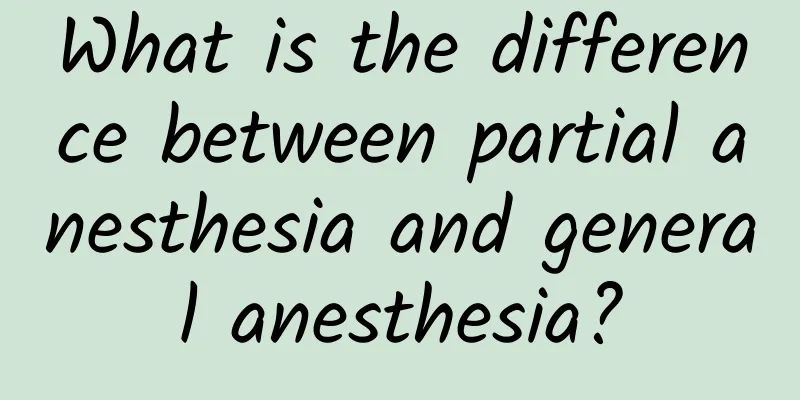What is the relationship between coronary heart disease, angina pectoris and myocardial infarction? Is stenting better or bypass surgery?

|
Author: Zhang Jianjun, Chief Physician, Beijing Chaoyang Hospital, Capital Medical University Reviewer: Wang Fang, Chief Physician, Beijing Hospital The heart has three coronary arteries, two on the left and one on the right, called the left anterior descending artery, the left circumflex artery and the right coronary artery. When blood lipids are deposited on the walls of the coronary arteries, it is called coronary atherosclerotic heart disease, or CHD for short. Figure 1 Original copyright image, no permission to reprint Coronary heart disease is caused by blood lipid deposition. The continuous deposition of blood lipids in blood vessels is equivalent to the deposition of silt in a river. If the silt is not cleared, the river will be blocked. Rivers need to be desilted regularly to keep the water flowing smoothly, but blood vessels cannot be desilted, so we must try our best to prevent these lipids from depositing on the blood vessel walls. Once lipids are deposited, many symptoms will occur: The first symptom is angina pectoris. This is because as lipid deposits accumulate, the blood vessels become narrower. In some cases, during the narrowing process, the plaque suddenly ruptures and causes thrombosis. At this time, the patient will feel uncomfortable. If the patient's condition is mild and only manifests as angina pectoris, such as severe pain when walking, or sudden severe pain when sleeping at night, waking up from the pain, take nitroglycerin immediately, and it will be relieved in a few minutes. This is the most common type. Figure 2 Original copyright image, no permission to reprint The second type is acute myocardial infarction. When lipids continue to deposit, acute obstruction occurs in the coronary artery lumen, and the heart muscle necroses due to lack of blood supply, this is called acute myocardial infarction. The patient will experience sudden pain, profuse sweating, nausea and vomiting, and must be rushed to the hospital for thrombolysis or emergency surgery. Without treatment, the mortality rate can be over 50%. In addition, coronary heart disease can also manifest as heart failure, arrhythmia and sudden death. Among all coronary heart disease patients, about 80% of them die of sudden death, that is, they suddenly die for no apparent reason, which is the worst situation. So we say that coronary heart disease is very harmful and must be treated actively. For different patients with coronary heart disease, their symptoms are different and the treatment methods are also different. Some people have 90% blockage. The doctor asked him, "Do you have any discomfort?" He said, "I am fine, nothing is wrong. I do what I should do and eat what I should eat." Some people have 70% blockage. They feel pain every day and cannot work. Even walking can induce pain. In the past, surgery was required if the blockage reached 80%. However, the patient with 90% blockage was not uncomfortable and had no symptoms, while the patient with 70% blockage was very uncomfortable and had symptoms. If we performed surgery on the patient with 90% blockage and not on the patient with 70% blockage, it would be inappropriate. So now there is a new concept, which is to perform surgery according to the requirements of the heart. If the patient's blood vessel is severely blocked, more than 90%, the myocardium it supplies has completely died, just like the lower reaches of a river used to irrigate farmland, but the sorghum in the farmland has all died, so what is the point of watering it? Therefore, it is meaningless to bypass the blood vessel or place a stent at this time. However, for another patient, although his blood vessel was blocked by 70% and he showed symptoms or signs of myocardial ischemia, the myocardial cells supplied by this blood vessel can still be saved. In this case, we should actively restore the blood supply to these myocardial cells through stents or bypass surgery. We call this functional revascularization. We now have a new technology that puts a very thin steel wire into the blood vessel to test the function of the blood vessel, and uses various drugs to see if the lesion has any effect on the blood vessel under simulated conditions. If there is an effect, surgery is required, and if there is no effect, surgery is not required. Therefore, whether a patient needs surgical treatment now depends on the patient's specific situation. There are two main surgical treatments for coronary heart disease, namely stents and bypass surgery. So many patients may wonder, which is better, stents or bypass surgery? Blocked blood vessels are the main cause of coronary heart disease, so we need to find a way to clear them. That’s why the concept of bypass surgery came into being. Just like a river is blocked, we build another river next to it, and then the river is cleared. This is called bypass surgery. The official name of bypass surgery is coronary artery bypass grafting. It is to take a blood vessel from the thigh and pass it next to the blocked coronary artery. The blood will flow through the newly created blood flow path instead of the original blood vessel, which can solve the problem. However, this surgery is very traumatic and requires thoracotomy. Later we found that stent surgery is better because it is convenient, painless, and does not require thoracotomy. We can just put a stent in to open the blood vessel. At present, stents have further evolved into drug-eluting stents and drug-eluting balloons. If it is simple, it can be completed in five minutes. Of course, sometimes it is more complicated and takes two or three hours. For coronary heart disease, some lesions are better treated with stents, some are better treated with bypass surgery, some are better treated with both surgical methods, and some lesions require both surgical methods together, which is called hybrid surgery. For example, a new scoring system has been developed internationally, called SYNTAX. It takes into account all factors such as lesion location, severity, bifurcation, calcification, etc. to produce a score: If the score is less than 22 points, a stent is a good choice; if the score is greater than 33 points, a bypass is a good choice; between 22-33 points, you can choose a stent or a bypass. Figure 3 Original copyright image, no permission to reprint Despite this, there are still some problems. For example, some patients are judged to be suitable for bypass surgery based on the scoring, but they have severe atelectasis and emphysema, and they cannot close the chest after opening it, which will also cause problems. Therefore, there is now a technology called hybrid surgery, which avoids the shortcomings of various surgeries and uses an "elite team" to solve problems that no one can solve. |
<<: Be careful! Swollen feet may be your heart's cry for help
Recommend
What causes pain in the lower left abdomen in women?
In life, it is inevitable to encounter many women...
What is physical therapy for uterine prolapse?
The uterus is a very critical body part for femal...
How much does it cost to check for endocrine disorders?
As we all know, women's endocrine system affe...
Is it safe to wear a condom during ovulation?
Since the female body is in a state of secreting ...
Does laser treatment of sharp and wet skin hurt?
Genital warts are very contagious and destructive...
Do you know the best time for pregnant women to eat fruit?
Fruits are not only a source of entertainment and...
I haven't had my period since 40 days after the miscarriage.
It is a normal physiological phenomenon that you ...
What is the right temperature to cook millet porridge? Is millet porridge nutritious if it is cooked over high heat?
We all know that millet porridge is a common nutr...
Bleeding after having sex without knowing I was pregnant
Young couples have very high demands on their dai...
If my child has low myopia, does he need to wear glasses?
My child is young, will he be unable to adapt to ...
What's going on when the breasts are discharge transparent water?
Breasts are the most important tissues for women,...
Flu is not a cold. The consequences of resisting it are serious! Some people were admitted to the ICU...
Expert of this article: Wang Qian, attending phys...
Can the ketogenic diet "starve" cancer cells? The list of scientific rumors in October 2024
1. As long as you don’t have a headache or feel d...
Can pregnant women eat Mogu?
Mushrooms contain a lot of protein, which is very...









